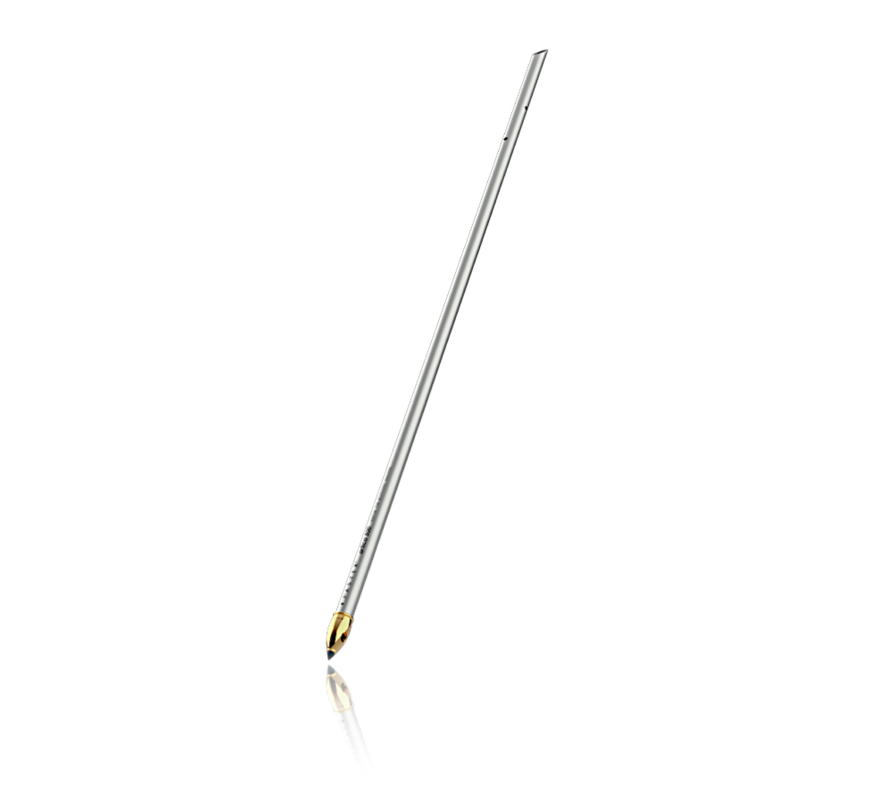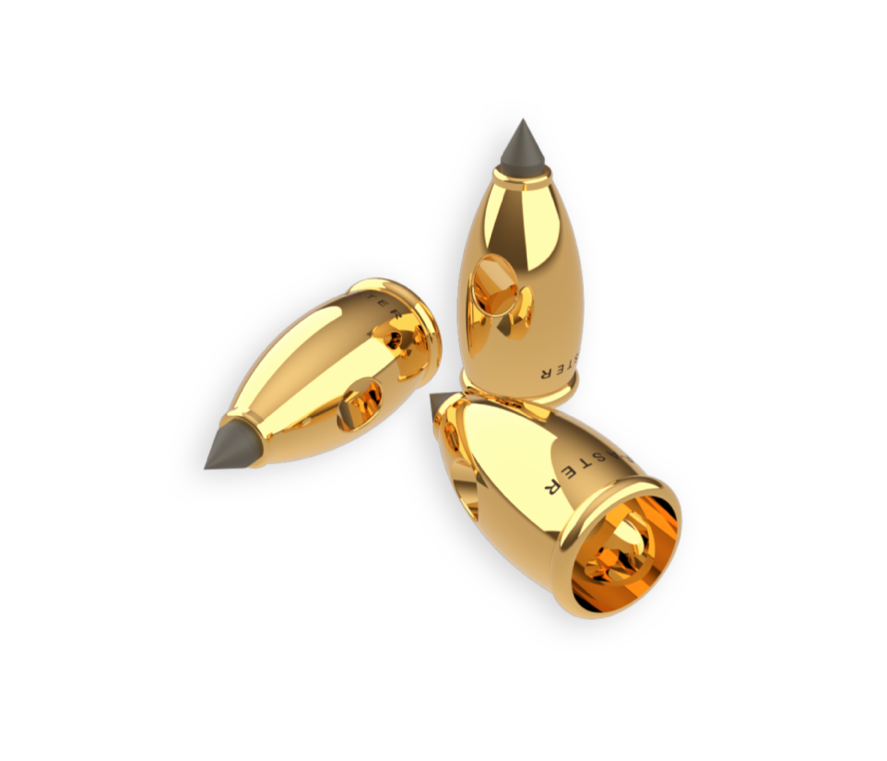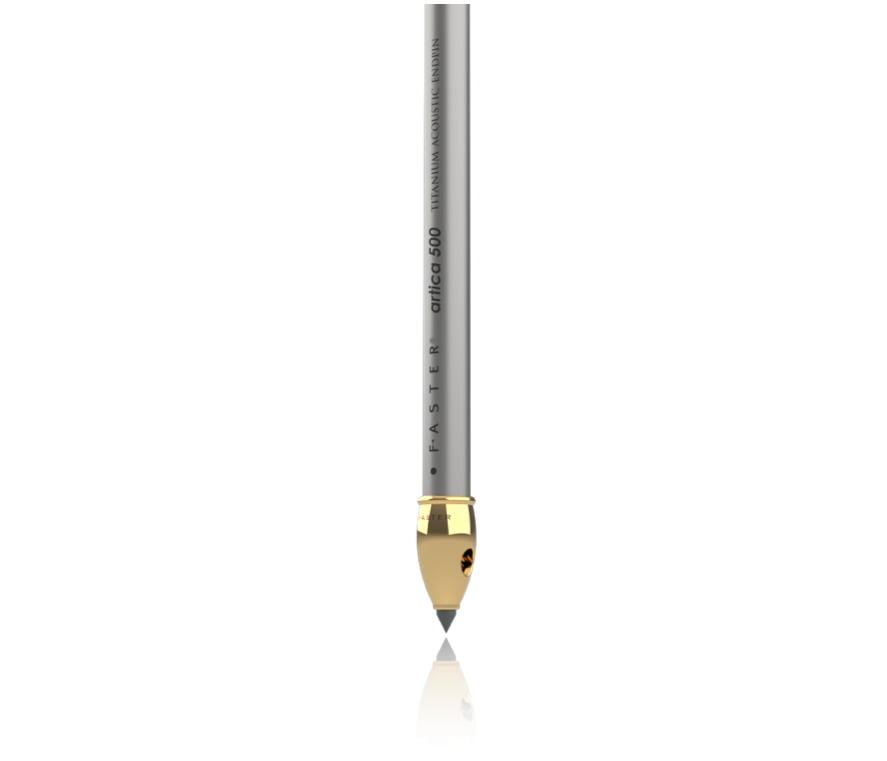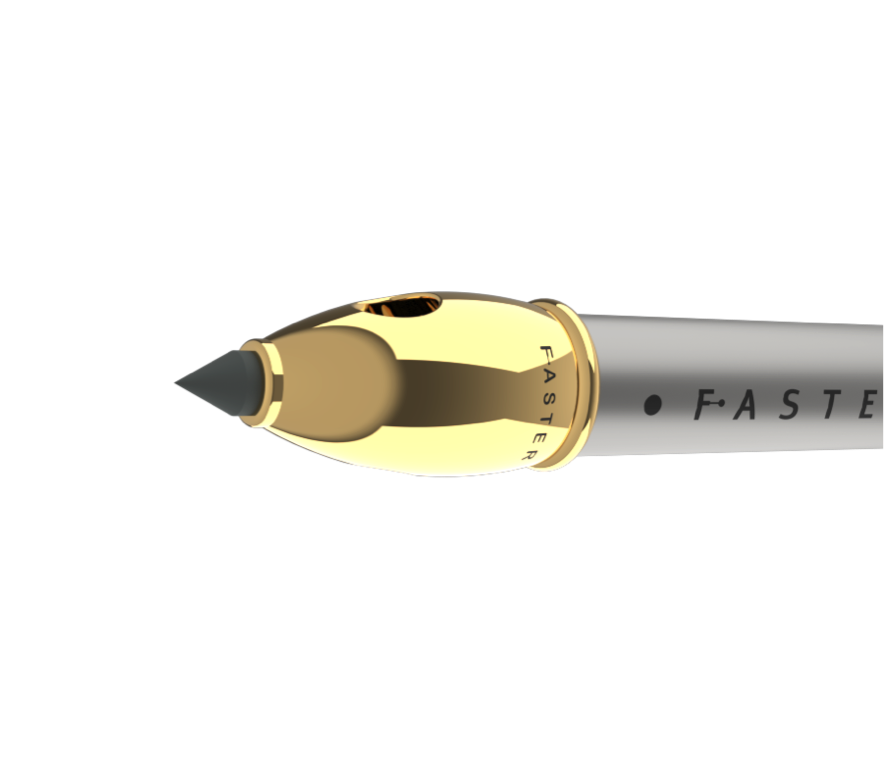Artica 500 - Titanium - Acoustic Endpin
FASTER Artica 500 Titanium Cello Acoustic Endpin is a high-performance cello endpin designed following complex parameters completely different from the acoustic cello endpins existing in the market. Its operation is based on diverse concepts of applied aerodynamics with which exceptional sound results have been obtained in concert halls, cello solo recitals, cello and piano recitals, chamber music and recordings.
The objective of FASTER Artica 500 Titanium and its main function is to eliminate part of the residual air that is constantly generated inside the cello and that, in turn, cannot be completely released from the resonance chamber through the f-holes, causing the incomplete production of harmonics.
FASTER Artica 500 Titanium Acoustic Endpin has been tested with excellent results on numerous fine cellos. It increases volume, harmonics production, sound projection, tone quality, ease of performance, and the lifetime of the strings. It also reduces or suppresses wolf tones and provides other nice features that will undoubtedly make your life easier, at least, when performing.
The relevant acoustic virtues of FASTER Artica 500 Titanium, its elegant and careful design, as well as the selection of exclusive materials and its high standard of manufacturing make this set an appreciated object of desire for any player. With FASTER Artica you will discover the new possibilities that your instrument offers to you.
SPECIFICATIONS
Total length: 520mm
Diameter: OD 10mm
Total weight: 77gr.
Capsule and tip set total weight: 10.4gr.
Hollow capsule: made of naval brass, with two perforations at an angle of 45° whose intersection forms a triangle that fulfills the role of air diffuser.
Hardened tungsten carbide tip: ready to be fixed on all surfaces. However, being a material almost as hard as diamond, it can fracture with a blow. Under normal use conditions, its performance will be effective for more than 15 years.
Titanium endpin tube: made of seamless aerospace titanium alloy and heat treated, constituted by a unidirectional carbon fiber inner core and by several carbon fiber compressors which act as air exchangers.
Cleaning: Clean with metal cleaners.
-
Edward Vanderspar
Principal violist. London Symphony Orchestra. England
The FASTER Titanium fitted to my old viola has freed the sound, improved the response, made the instrument more reliable when traveling to different climates, and is real fun to play. The viola feels very free and more powerful and speaks more easily. I think it is a fantastic and fascinating invention.
-
Mauro Rossi
Violin concertmaster - Milano, Italy
The Faster Titanium is incredible. The violin has been reborn in a whole new dimension. It is the best acoustic invention in the history of the violin.
Congratulations!
-
Pablo de León
Concertmaster. Orquesta Sinfónica Municipal de São Paolo. Brasil
I have used FASTER Titanium in my Oddone violin since its assemblage in London. The violin sounds very well, is freer, and has a quicker response thanks to an increase in harmonics.
It is undoubtedly an excellent tool for those seeking to enhance the qualities of their instrument, and for that, I recommend it!
-
Vlad Stanculeasa
Concertmaster - Orquesta Sinfónica de Barcelona. Spain
The FASTER Titanium belongs to the trained ear seeking out the precise balance between string pressure and freedom of sound. A unique tool in service of expressivity.
-
Michele Ferrari
Maestro Luthier - Cremona, Italy
I have installed many FASTER devices, and the result is outstanding.
Acoustic volume and ease of playing have increased to a great extent in all cases.
If you want to equip your instrument with a turbo, I recommend it to everyone, both musicians and luthiers.
-
Miguel Jiménez
Principal cellist - Orquesta Nacional de España. Madrid, Spain
Of the present plethora of acoustic cello endpins, the FASTER Artica Titanium stands out to a notably large extent. It is the result of years of research and experience by maestro luthier José María Lozano, and, like FASTER for violin and viola, enhances both the quality and the quantity of sound in a truly astonishing manner. That happens both from the player and the listener’s perspectives. However, if I had to choose only one out of the multiple advantages it contributes, that would probably be its outstanding feeling of convenience. That is noticeable in the immediate reaction of the string in contact with the bow, and the left-hand’s smoothness of articulation. That not only produces better acoustics-related results but also, thanks to that feeling of convenience, gets to increase the cellist confidence in their instrument and themselves. Not everyone can afford a Strad; however, a big step is within everyone’s reach with FASTER. In my opinion, it instantly gets to turn a cello into a better one without spending a fortune.
Maestro Lozano and his FASTER succeed in making us happier by substantially improving our experience with the instrument.
-
Giovanni Radivo
Concertmaster - Orquestre National de Lyon. France
I have installed the FASTER Titanium by maestro Lozano in my J. B. Vuillaume violin, and I am well satisfied with the surprising effect.
The sound is more bright, open, and rich in harmonics. The response of the strings during a bow stroke is much quicker. The instrument is undoubtedly more comfortable to use, and besides, the wolf tone that it had on the fourth string is practically gone.
I strongly recommend FASTER to everyone wishing to enjoy their instrument’s potential to the fullest.
-
Javier Monteverde
Sound Engineer - www.cezanneproducciones.com. Madrid, Spain
Following the tests carried out in Cezzane Recording Studios, aimed to check the empirical result and potential advantages of the mechanical device called FASTER for violin, I have observed that the device has real effectiveness in the instrument tone.
My perception as a sound engineer and producer of many chamber music and orchestra recordings that include the violin as a soloist instrument is that, with FASTER, the sound is louder and more broadly spread. Besides, those notes that, due to the instrument’s characteristics, were excessively loud, are now balanced, and the listener perceives a more steady and silky sound. After recordings of the same length of time, I have also noticed that, with the FASTER device, the microphones have captured an extra richness in harmonics and sound frequencies, because, far from changing the timbre of the violin, it enriches its sound and therefore the music coming out of it.







